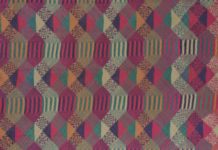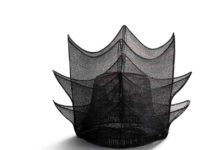Songkok, also known as Kopiah, is one type of headgears worn by males which has been accepted as ceremonial headwear especially among the Malays in the Archipelago including in Brunei Darussalam. Songkok-making is a traditional craft produced by both men and women. Songkok is made of velvet, cardboard and cotton. The cardboard is used to replace the old method of using pieces of newspaper as stiffener. When all the parts are sewn they are then assembled and fitted according to the shape, height and head size required before the velvet is stitched on.
The songkok became a familiar sight in the Malay Archipelago around the 13th century when Islam began to take roots in the region. It was believed that the influence was originated from India and was brought by the traders. In Indonesia, songkok, which is also known as peci, was popularized by its first president, Soekarno, to symbolize ethnic and national solidarity. In Negara Brunei Darussalam, Songkok is part of Malay traditional attire for men. It is commonly worn during ceremonial functions such as royal court functions, attending an audience ceremony from the Sultan, official ceremonies such as National Day celebrations, Convocation ceremony etc. Songkok is also worn at social functions such as weddings, thanks giving, Hari Raya Aidil Fitri and Hari Raya Aidil Adha. For many men, songkok has become their daily wear especially when going out. It is also common to see men wearing songkok during funeral. Among the Muslims, wearing headgears such as songkok is a commendable action, although it is not obligatory. In fact the wearing of headgears is closely related to Prophet Mohammad tradition. The use of songkok has come to symbolize national culture of Brunei Darussalam, which is based on Islamic, Malay and monarchical values. In addition, songkok also signify honor and respect.
In many government and uniform officers, Songkok has been adopted as part of official attire for men, such as Royal Brunei Armed Forces, Royal Brunei Police, Brunei Fire Rescue Department and Scouts. The colours of the songkok usually represent specific institution. At primary and secondary schools, black songkok has also been worn by male pupils as part of their school uniform.

Songkok is worn as part of an official uniform.
Songkok worn by males.






